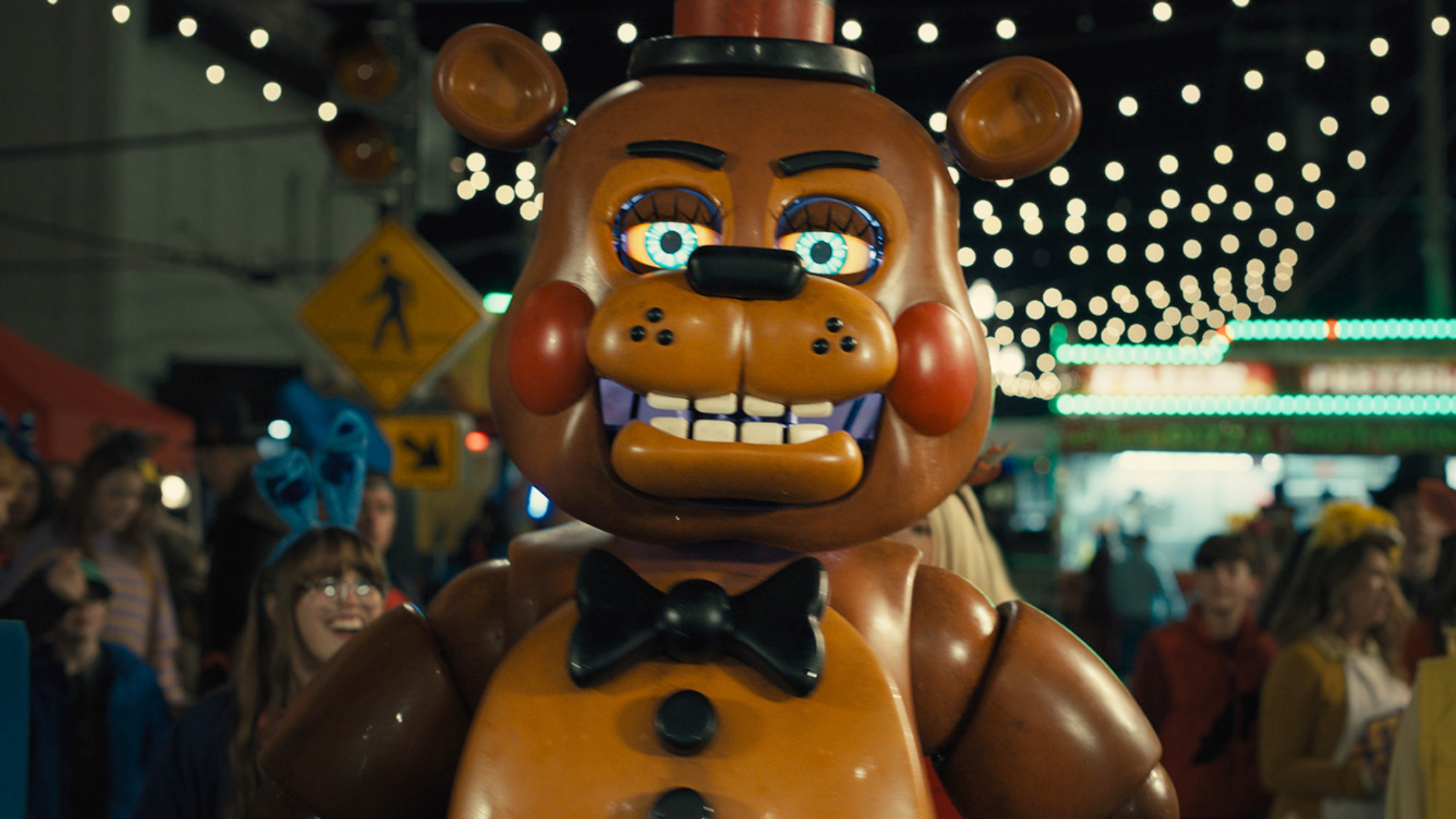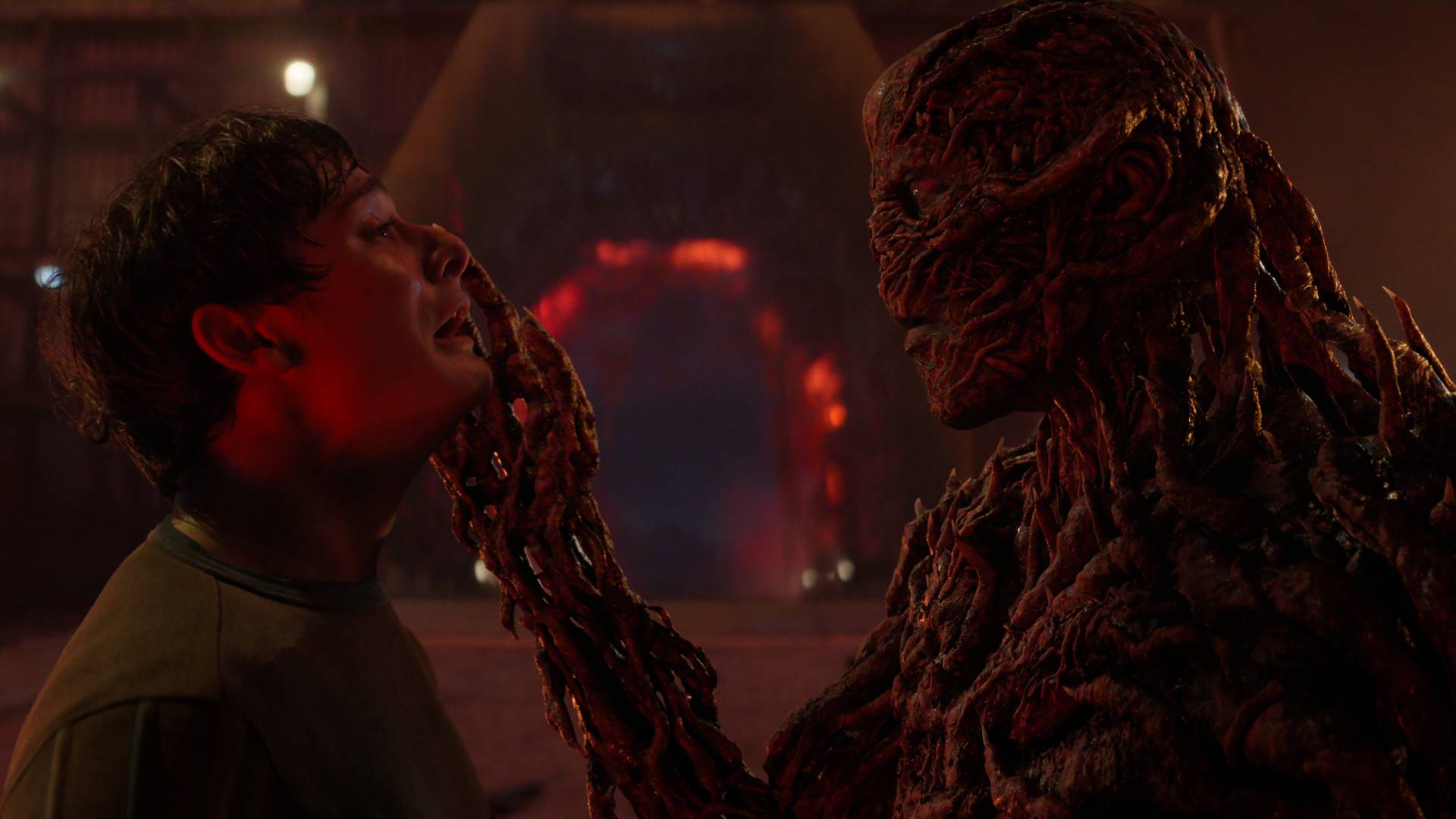Doctor Sleep director Mike Flanagan talks The Shining, Stephen King, and why Rebecca Ferguson's villain is "on the same level as Pennywise"
SFX magazine meets with director Mike Flanagan to discuss The Shining sequel

You’d be forgiven for wondering if Mike flanagan is some sort of glutton for punishment. A year ago he was unveiling The Haunting Of Hill House, the Netflix show based on Shirley Jackson’s classic 1959 horror novel. That came with obvious daunting challenges – like expanding a very contained story into 10 hours of TV – and a heavy burden of expectation from fans of both the book and Robert Wise’s 1963 film. Tough gig. But all that pales into insignificance compared to the task he took on next (writing the script while shooting Hill House): adapting Stephen King’s 2013 novel Doctor Sleep, a sequel to The Shining centred on a grown-up Danny Torrance.
It’s a job that’s involved not just the usual challenges of bringing a book to the screen, but also meticulously recreating one of cinema’s most iconic spaces, and marrying two fictional universes in a way that keeps both the estate of Stanley Kubrick and the author – who famously loathes Kubrick’s 1980 film – happy.
“That tug of war and tightrope act has been a bleeding ulcer for me for two years,” the writer/director tells our sister publication SFX magazine, with a wry laugh. King’s book is mostly set 36 years after Jack Torrance, winter caretaker at the overlook Hotel, flipped out and tried to kill his family. After years of using drink to muffle his psychic abilities, Dan Torrance is a sober regular at AA meetings. He now uses the Shining to help patients at the hospice where he works pass over peacefully – earning himself the sobriquet doctor Sleep. Then Abra, a girl whose Shining gifts dwarf his own, makes mental contact. Via her, he learns of the True Knot, a nomadic group of outwardly unremarkable RV dwellers who’ve achieved near-immortality by feeding on “Steam”, an essence released when kids with the Shining die. This essence is at its purest when the child dies in agony, after horrific torture. And 12-year-old Abra could keep them stocked up for years to come…
Shine On
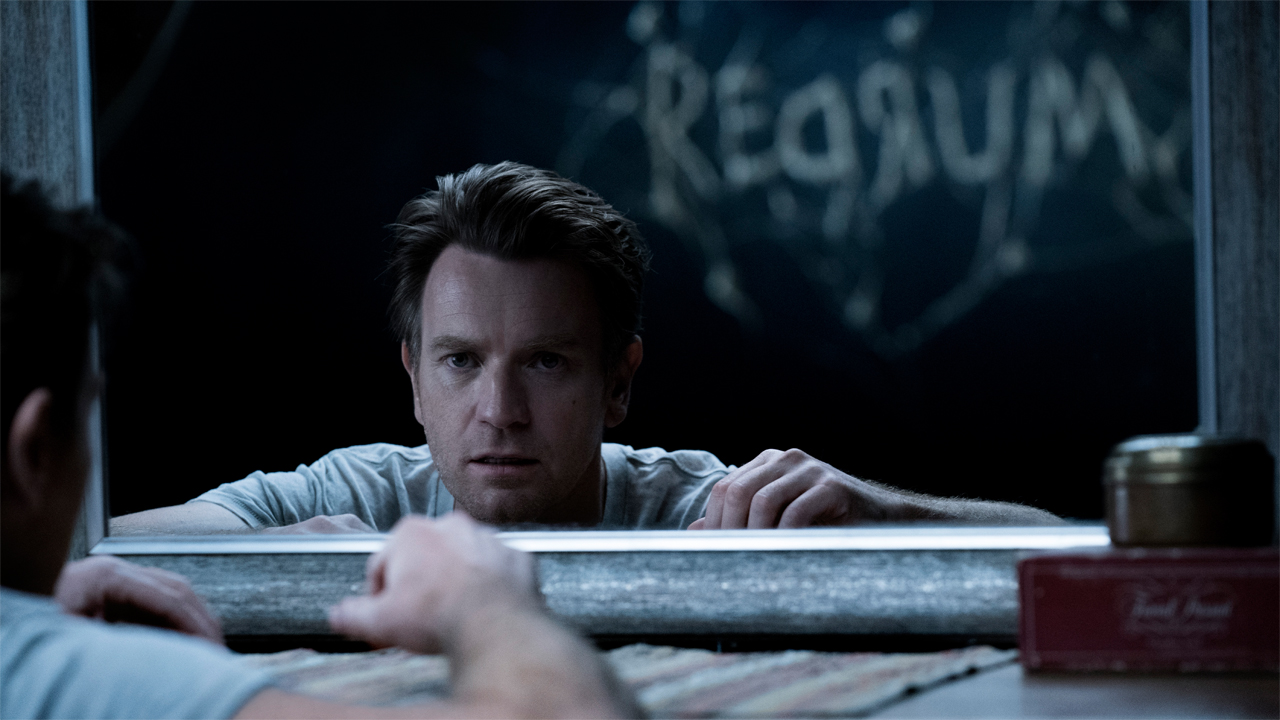
Though it’s the trailer’s visual references to Kubrick’s movie which will have most excited horror fans – flashes of the overlook’s luridly-carpeted hallways (“I’ve got that pattern on my socks right now,” Flanagan confesses), the door to room 237, the sinister Grady twins – the writer/director is keen to stress that Doctor Sleep stands on its own two feet. “If you were to completely take away the overlook and the Shining of it all, this new story of Dan, Abra and the True Knot is fascinating in its own right,” he says. “That’s where the focus really needed to be. It had to be that i was making a movie about Dan and Abra – that’s the cornerstone. If that was the first priority, I was confident we could make the rest of it work. But if I lost sight of Dan and Abra, the whole enterprise would collapse.”
An understanding of the character of Dan in particular was absolutely vital for keeping the film grounded, according to Flanagan’s regular producing partner Trevor Macy. “Dan was the way in for us,” he explains. “Mike and I’ve spent a lot of time, in the stuff we’ve done together, exploring the idea that fear is inextricable from childhood, and there’s no better example of a childhood trauma everyone knows than Danny Torrance. It’s super-interesting to figure out how to pull that through to an adult. We know he Shines. How has he dealt with that? How’s he dealt with the fact that his father tried to murder him? ‘What’s that guy like as an adult?’ was the core of what interested us. Telling Danny’s story, and making him relatable to an audience, is a better way to approach this than spending your time thinking, ‘This is a sequel to Stanley Kubrick’s movie.’”
Flanagan knew that Ewan McGregor was the right man for the part at their initial meeting when, after a few moments discussing The Shining, they spent the rest of the 90 minutes talking about the adult dan – a character who reflects Stephen King’s own struggles with addictions to alcohol and drugs in the ’70s and ’80s. “The Shining is really about King’s anxiety about what his addiction could do to his family,” Flanagan notes. “And Doctor Sleep is his reflection, as a sober adult, as to what decades of sobriety have done to him, and how he looks back at the past through that lens. That’s what Ewan connected to, and what connected me to the story as well. So while we’d talk about how The Shining informs this story, we were both way more focused on Dan, and the themes of addiction, recovery, and how our past childhood traumas and family experiences can shape us.”
Putting on her top Hat
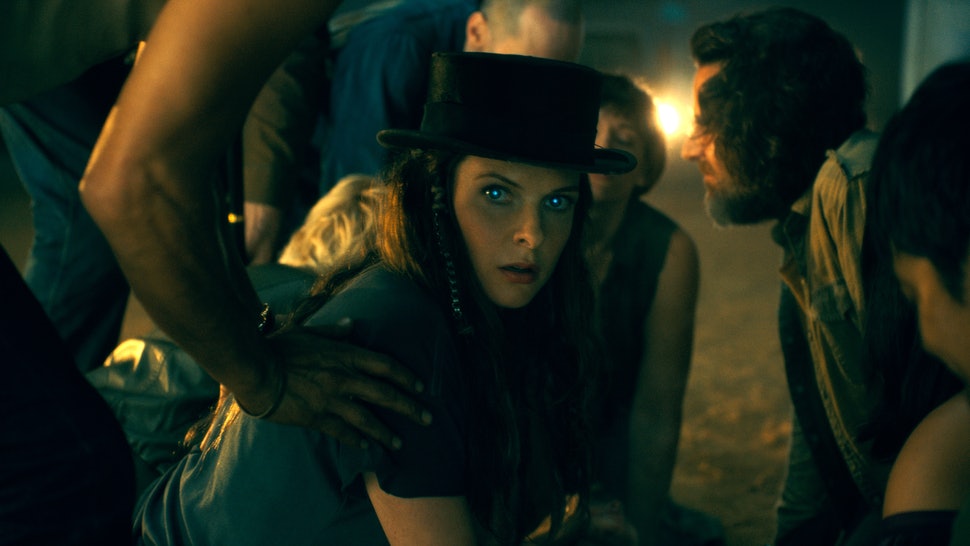
Another key role to fill was rose the Hat, leader of the True Knot – so called because of her jauntily-angled top hat. Memorably described in the book as “the Queen bitch of Castle Hell”, rose is as vicious as she is beautiful, and doesn’t take kindly to “rubes” (as the True Knot call regular humans) like Abra and dan crossing her. She’s played by Mission: Impossible’s Ilsa Faust, Rebecca Ferguson. “She’s amazing,” says Flanagan. “And I think people are going to be appropriately terrified of her. When I read the book, I thought rose the Hat was one of the best King antagonists I’ve seen in years – on the same level as your Randall Flaggs and your Pennywises. As terrifying as she is, like any great cult leader she’s also incredibly charismatic and magnetic. And we’re seeing what happens when characters like that in real life are put in positions of power. I think there’s a lot to unpack there...
Weekly digests, tales from the communities you love, and more
“What the True Knot devour is innocence, is childhood,” he continues, doing a little of that unpacking for us. “They’re the embodiment of trauma. That’s terrifying to me in a really profound way. When you talk about the Shining as this thing that makes Danny and Abra special, that they feel the need to hide from society because people will devour it, that thematically resonates with me in terms of some of the scarier elements of where we are as a society right now. I think Rose embodies a lot of the anxiety of people who are different, and are struggling with how to reconcile their identity in a society that’s hostile towards it.”
Different strokes
Getting the casting right was a relatively easy matter compared to Flanagan’s biggest headache: coming up with a screenplay which would get the green light from both the King and Kubrick camps. The challenge facing him was two-fold. King’s novel of The Shining differs from Kubrick’s adaptation in many ways; how best to reconcile them? There’s no hedge maze, but there are topiary animals that come to life; Jack’s weapon of choice is an indoor croquet mallet, not an axe; overlook cook Dick Halloran survives, instead of dying. Most significantly, the book ends with the hotel going up in flames.
While King’s sequel novel does visit the site where it once stood, the Overlook itself is clearly a more significant presence in Flanagan’s film – though whether this is purely in dreams, visions and flashbacks remains to be seen. Then there’s the small matter of King actively disliking Kubrick’s film (to the point of “fixing” it with his screenplay for a 1997 mini-series). it helped that Flanagan and Macy had already won King’s trust with an adaptation of his 1992 novel Gerald’s Game that he was “very happy with”. But what else did they have to do to keep him happy?
“The answer to that revolves around something i can’t tell you,” Macy teases. “But I will say that it was a thorough pitch. When Mike and I went to show King the movie, one thing he said was, ‘The difference between Kubrick’s version and mine is: Kubrick’s ended in ice, and mine ended in fire.’ What he means by that is: in his view there’s a warmth to his characters, and a coldness to Kubrick’s. So he was very keen on not repeating that experience. We’d pitched a way that definitely doesn’t fall victim to that criticism.”
“I had the benefit of being able to look at his reaction to that adaptation and see what had bumped him,” Flanagan explains. “The hardest part was staying true to the cinematic space Kubrick had built while being careful not to take the characters off the tracks King had laid – that was his chief complaint about The Shining. How to return to the overlook in a manner that was respectful and reverent of Kubrick, while protecting the characterisations King had created for Doctor Sleep – that was the hardest balancing act. it was damn fun though!”
An equally mind-frying yet enjoyable challenge was recreating the Overlook’s iconic interiors. Flanagan’s team were able to consult the original plans for the sets, held in the Kubrick Archive, but soon discovered that they were sometimes at variance with what actually ended up on-screen. “Trying to figure out why he’d changed things was forensically incredibly interesting,” Flanagan says. “We’d realise, ‘Oh, he changed this build because he was going to have a better composition if the door was moved.’ Or we’d be scratching our heads about there being steps in the residents’ hallway, going into the Torrances’ apartment. Why? it doesn’t seem to make sense. Then we learned that those were physically present on the soundstages where he built the hotel, and they just incorporated it into the design because they were using every available square foot. So a lot of elements that were forced upon him we needed to recreate as well.”
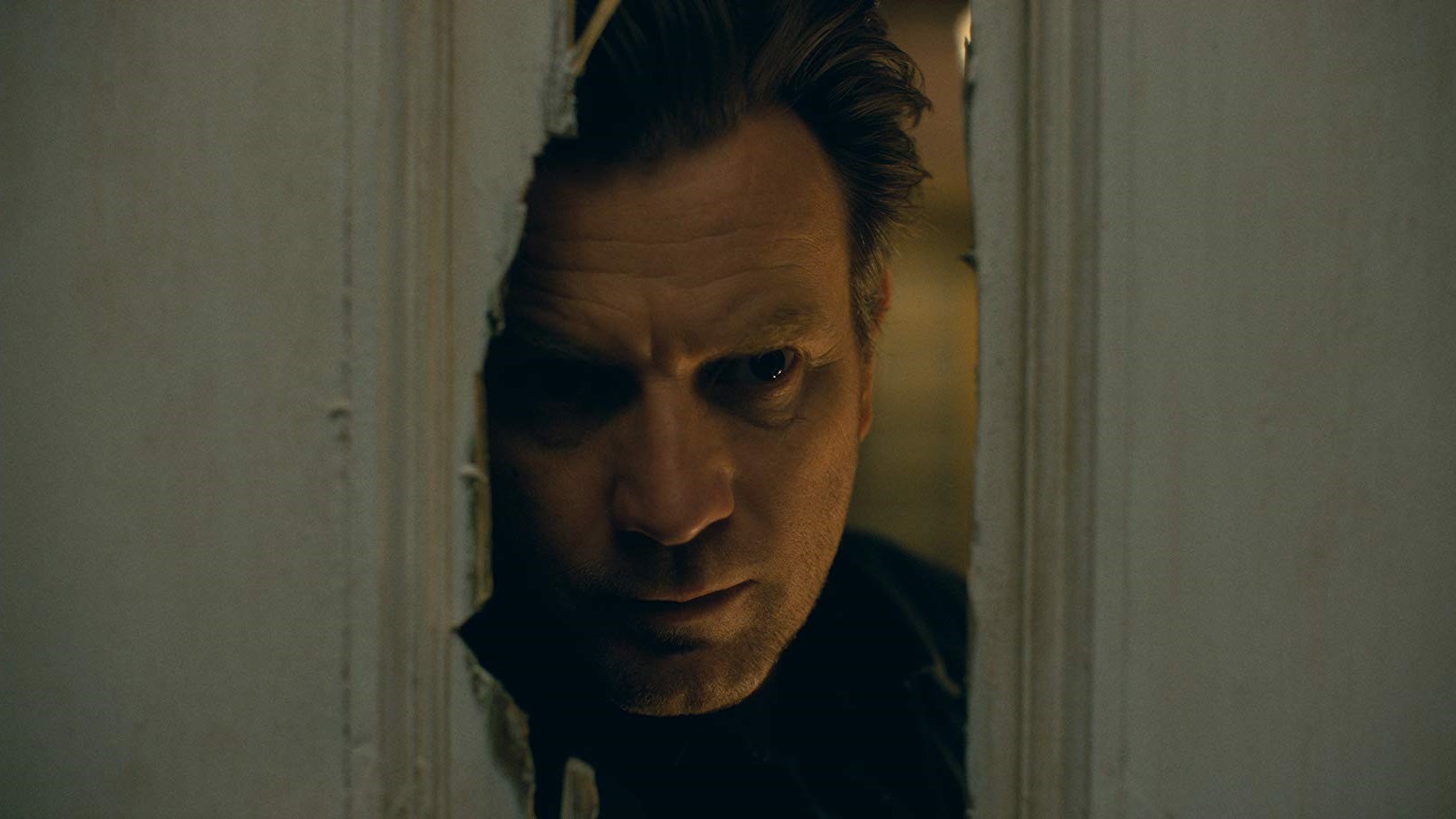
This meant that in addition to carefully studying the blueprints, Flanagan and co also had to go through the movie hundreds of times – and continually have it to hand. “I’d have my iPad on set to pull up frames,” says Macy. “You’d be walking around going, ‘Oh shit, we’re close on that picture, but it doesn’t quite look the same. Let’s move that from here to there.’ Kubrick’s continuity wasn’t entirely internally consistent, but his attention to detail sure as hell was. So we found ourselves making choices based on, ‘Okay, what do we think the audience remembers from this?’ This involved making decisions about all manner of details.
“Famously, there are different-coloured typewriters in The Shining,” Macy says. “Which one do you match? So there’s that level of things. one of the most challenging was: what’s the room number of Mrs Massey’s room? Was it 217 or 237?” In King’s novel, Danny encounters this gruesome spirit in room 217. in Kubrick’s film it became room 237, because the management of the Timberline Lodge, where exteriors were shot, had a room 217, and were worried that guests might be put off staying in it!
“We played around with the idea that a number had fallen off because of disuse, so it was 2–7,” says Macy. “Making every choice like that was agonising. I hope we got them right!” All the hard work was worth it once they walked into the overlook for the first time, though. Flanagan has compared the experience to being in church. “The feeling i had when i stepped onto the set... it’s so surreal,” he says. “It’s like walking into a memory. The fact that I felt that way, and the cast and crew did, gave me hope that if we approached this with a deep love for those spaces, maybe the audience would too.”
Now that the sets all have been torn down, we can’t resist enquiring if they have any rolls of that orange carpet going spare… “I think we might!” Flanagan says, causing your SFX hack’s heart to skip a beat. “I know Ewan McGregor has some that he took back for his house. I’ve also heard rumours that the carpet’s going to be put in conference rooms at Warner bros at some point.” Er, is that wise? If, a few months from now, you read about some horrific axe murders at Warner HQ, you’ll know what malign influence was responsible.
In the meantime, with the Overlook ready to welcome new visitors, Flanagan’s principal emotion seems to be relief that his struggles are now over. “I’m not Stanley Kubrick!” Flanagan says. “He’s on a level that I struggle to understand, and have been in reverence of since I was first learning about cinema, so at no time was I ever going to presume to try to work like he did. God, the intimidation factor – between him and King, it was a little more than I knew how to handle. The pressure was absolutely amazing. So my thing was to try to honour them more than imitate them. Now I’m really glad that it’s over, and I’m excited for people to see it, because we have come out the other side of all that anxiety with a movie that Stephen King loves, and the Kubrick estate loves. I’ve been able to exhale for the first time in a very long time now those two camps have weighed in on it! I hope audiences feel the same way.”
Doctor Sleep is in UK and US cinemas now. This feature came from SFX magazine. If you're a fan of SFX, you can even subscribe so that you never miss an issue. We’re currently running an offer where you can subscribe from as little as £10.25 every three months. Head to My Favourite Magazines now to take advantage of the offer. (Ts and Cs apply).
Ian Berriman has been working for SFX – the world's leading sci-fi, fantasy and horror magazine – since March 2002. He's also a regular writer for Electronic Sound. Other publications he's contributed to include Total Film, When Saturday Comes, Retro Pop, Horrorville, and What DVD. A life-long Doctor Who fan, he's also a supporter of Hull City, and live-tweets along to BBC Four's Top Of The Pops repeats from his @TOTPFacts account.

